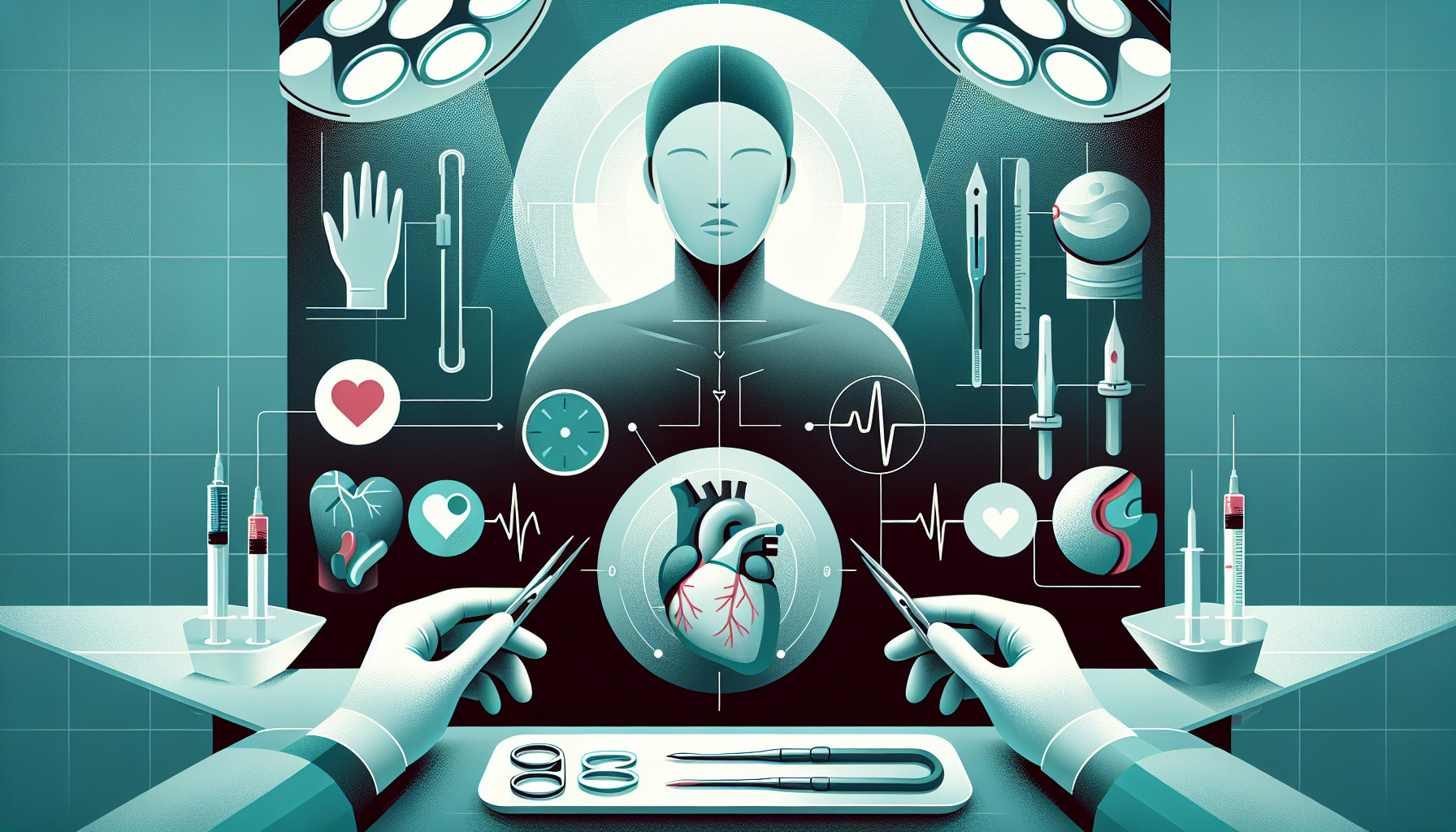Our Summary
A ventricular septal defect (VSD) is a hole in the wall of the heart that separates the two lower chambers, or ventricles. This condition can sometimes occur after a heart attack, or myocardial infarction (MI), and it’s not very common, but it is quite serious and often results in death.
This study looked at what happens when a procedure called a coronary artery bypass graft (CABG) is done at the same time as the surgery to repair the VSD. The CABG is a type of surgery that improves blood flow to the heart.
The researchers looked at 67 studies published between 2000 and 2018, which included data on over 2,000 patients who had a VSD after a heart attack.
They found that the most common type of heart disease in these patients was in a single blood vessel, and it was usually in the left anterior descending coronary artery. In half of the patients, the CABG was done at the same time as the VSD repair.
However, the researchers found that having a CABG at the same time as the VSD repair didn’t significantly affect whether the patient survived or not.
In conclusion, the researchers suggest that doctors should weigh the potential benefits of doing a CABG at the same time as a VSD repair against the risks of a longer surgery time. The CABG procedure doesn’t seem to improve survival rates, so it might not be worth the extra risk in some cases.
FAQs
- What is a ventricular septal defect (VSD)?
- Does having a coronary artery bypass graft (CABG) at the same time as a VSD repair improve survival rates?
- What do the researchers suggest about conducting a CABG at the same time as a VSD repair?
Doctor’s Tip
One important tip that a doctor might give a patient undergoing heart bypass surgery is to follow a healthy lifestyle post-surgery. This includes maintaining a balanced diet, staying physically active, quitting smoking, and managing stress levels. These lifestyle changes can help improve overall heart health and reduce the risk of future heart problems. Additionally, it’s important for patients to attend follow-up appointments with their healthcare provider to monitor their progress and address any concerns.
Suitable For
Patients who are typically recommended for heart bypass surgery include those with severe coronary artery disease, blockages in multiple blood vessels, or those who have had a heart attack. Additionally, patients with heart failure, chest pain, or other symptoms of coronary artery disease may also be recommended for heart bypass surgery. Ultimately, the decision to undergo heart bypass surgery is made on a case-by-case basis by a cardiologist or cardiac surgeon after a thorough evaluation of the patient’s overall health and medical history.
Timeline
Before the heart bypass surgery, a patient may experience symptoms such as chest pain, shortness of breath, fatigue, and other signs of coronary artery disease. They may undergo various diagnostic tests such as an electrocardiogram (ECG), stress test, echocardiogram, and cardiac catheterization to determine the extent of the blockages in their coronary arteries.
After the heart bypass surgery, the patient will typically spend several days in the hospital for recovery. They will be closely monitored for any complications such as infection, bleeding, or irregular heart rhythms. Physical therapy may be started to help the patient regain strength and mobility. The patient will also be prescribed medications to manage pain, prevent blood clots, and reduce the risk of complications.
Over the following weeks and months, the patient will need to follow a cardiac rehabilitation program to improve their heart health and overall well-being. They will need to make lifestyle changes such as adopting a heart-healthy diet, quitting smoking, and getting regular exercise. Regular follow-up appointments with their healthcare provider will be necessary to monitor their progress and make any necessary adjustments to their treatment plan.
What to Ask Your Doctor
Some questions a patient should ask their doctor about heart bypass surgery and VSD repair include:
- What is the success rate of combining a coronary artery bypass graft (CABG) with VSD repair in patients who have suffered a heart attack?
- What are the potential risks and complications associated with undergoing both procedures simultaneously?
- How will having a CABG at the same time as VSD repair affect my recovery time and overall outcome?
- Are there alternative treatment options available for VSD repair that do not involve CABG?
- What factors will you consider when determining whether or not to perform a CABG during the VSD repair surgery?
- Can you explain the potential benefits of undergoing a CABG at the same time as VSD repair for my specific case?
- What is your experience and expertise in performing both procedures simultaneously?
- Are there any specific guidelines or criteria that need to be met in order to qualify for a combined CABG and VSD repair surgery?
- How will you monitor and manage my condition after the surgery to ensure the best possible outcome?
- Are there any lifestyle changes or medications I should consider following the surgery to maintain heart health and prevent future complications?
Reference
Authors: Horan DP, O’Malley TJ, Weber MP, Maynes EJ, Choi JH, Patel S, Challapalli J, Luc JGY, Entwistle JW, Todd Massey H, Morris RJ, Tchantchaleishvili V. Journal: J Card Surg. 2020 May;35(5):1062-1071. doi: 10.1111/jocs.14515. Epub 2020 Apr 1. PMID: 32237166
